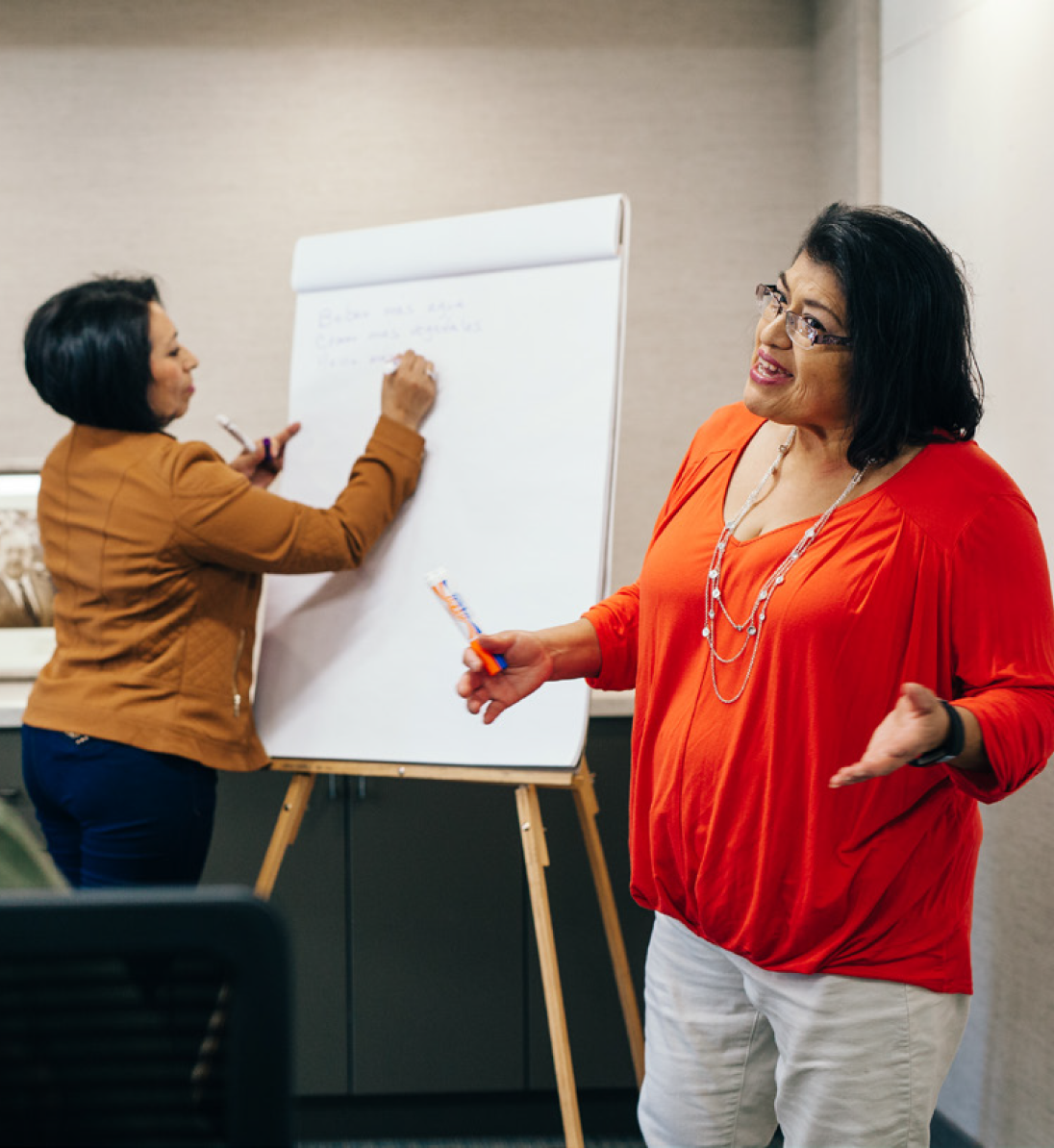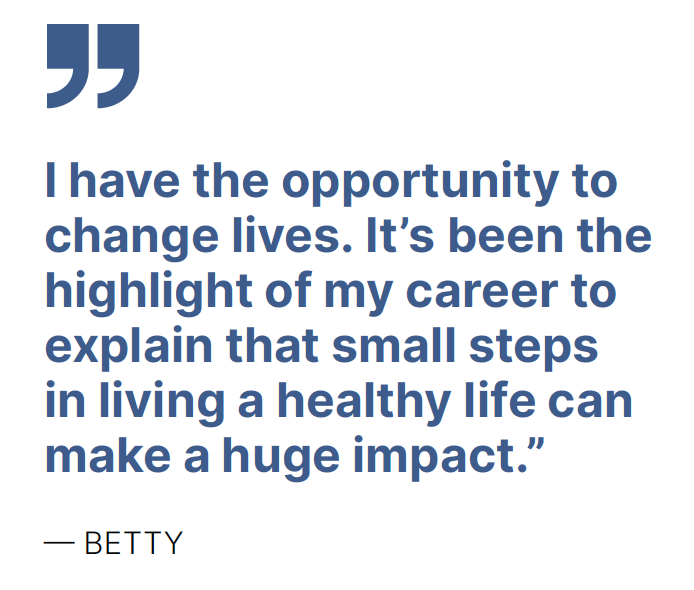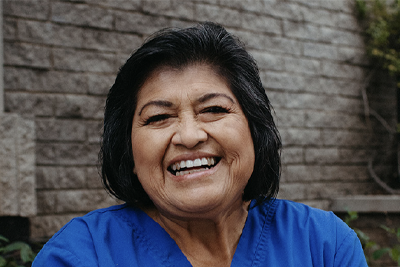Meet Betty, a dedicated Community Health Worker at Sansum Diabetes Research Institute and an inspiring example of resilience and hope. Living with diabetes herself, Betty not only manages her own health but also empowers others in the community facing similar challenges. Her story is one of strength and compassion—demonstrating how it’s possible not just to live with diabetes, but to thrive. This National Diabetes Awareness Month, we’re honored to share stories like Betty’s that showcase the power of support, education, and community, bringing to life the profound impact of SDRI’s mission to improve lives.
Betty developed gestational diabetes mellitus (GDM) 29 years ago while she was pregnant with her oldest daughter. Shortly after delivering, Betty was diagnosed with type 2 diabetes. Unfortunately, at the time, Betty did not have adequate education about diabetes to understand that as a result of having GDM she was at a greater risk for developing type 2 diabetes postpartum.

Women who develop GDM are often encouraged to exercise regularly and to eat a healthy diet after their pregnancy to help control blood glucose levels postpartum.
After living with diabetes for 15 years, Betty discovered SDRI and had the opportunity to participate in a diabetes self-management education program which changed her life. Throughout the program, Betty learned vital information about managing her diabetes, eating more nutritiously, engaging in physical activity, checking blood glucose levels, as well as coping skills for managing the emotional impact of living with this disease.
The success Betty experienced after participating in SDRI’s education program inspired Betty to take her journey with diabetes even further. In 2013, Betty became a certified Community Health Worker (CHW) which gave her the opportunity to give back to her community. As a CHW, Betty has helped hundreds of
people experiencing diabetes improve their lives. One of Betty’s favorite roles as a CHW is to organize community clinics that provide diabetes screenings at no cost at locations around the city.
“When I shared the outcome of participants A1c results they were surprised by the numbers, and I advised them to immediately consult their primary care physician for follow up care,” said Betty. “I reassured participants that if they took care of their bodies and ate more nutritiously, this would improve their health outcomes.”


